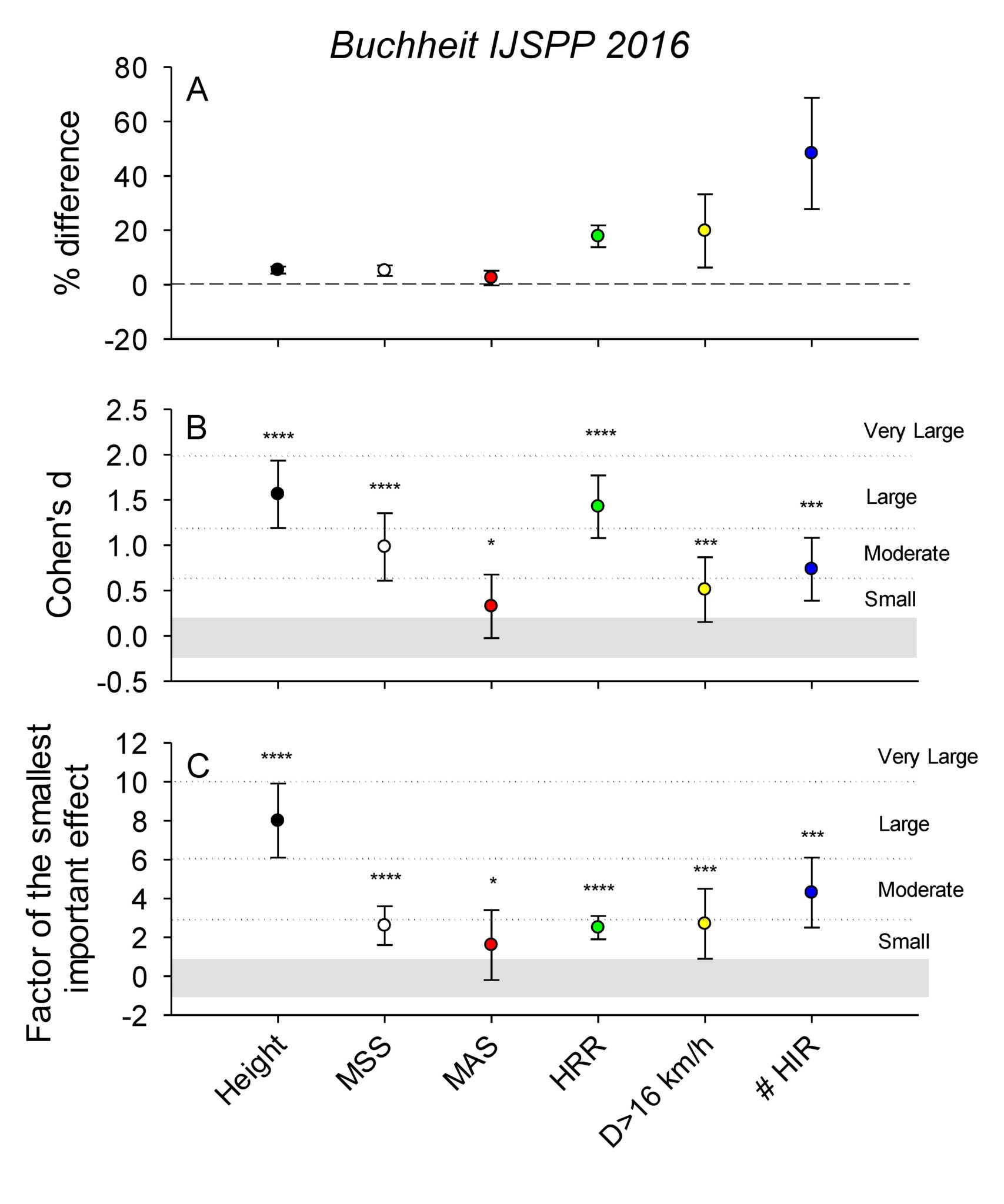The numbers will love you back in return – I promise
Buchheit M. The numbers will love you back in return – I promise. IJSPP 2016, 11, 551 – 554
Full text here
Abstract: The first sport science-oriented and comprehensive paper on magnitude-based inferences (MBI) was published 10 years ago in the first issue of this journal. While debate continues, MBI is today well-established in sports science and in other fields, particularly clinical medicine where practical/clinical significance often takes priority over statistical significance. In this commentary, some reasons why both academics and sport scientists should abandon null hypothesis significance testing (NHST) and embrace MBI are reviewed. Apparent limitations and future areas of research are also discussed. The following arguments are presented: P values and in turn, study conclusions, are sample-size dependent, irrespective of the size of the effect; significance doesn’t inform on magnitude of effects, yet magnitude is what matters the most; MBI allows authors to be honest with their sample size and better acknowledge trivial effects; the examination of magnitudes per se helps provide better research questions; MBI can be applied to assess changes in individuals; MBI improves data visualisation; and lastly, MBI is supported by spreadsheets freely available on the internet. Finally, recommendations to define the smallest important effect and improve the presentation of standardized effects are presented.
Keywords: magnitude-based inferences; null hypothesis significance testing; sample size; trivial effect; smallest important effect.

Figure 3. Differences in various anthropometric, physiological and performance measures between two groups of young soccer players differing by their maturity status (0.9 ± 0.3 vs. -0.2 ± 0.4 years from predicted peak height velocity)30 when expressed in percentages (A), using Cohen’s effect size principle (B) and as a factor of variable-specific smallest worthwhile differences (SWD) (C):28 0.2 x between-athletes SD for height, MAS and matches tracking data; performance-related changes for HRR and MSS (723 and 222%, respectively). The numbers of * indicate the likelihood for the between-group differences to be substantial, with 1 symbols referring to possible difference, 2 to likely, 3 to very likely and 4 to almost certain differences. Note that that magnitude of the between-group differences and their likelihood varies between the panels. My suggestion is to use the method used in panel C (with a variable-specific SWD). MSS: maximal sprinting speed, MAS: maximal aerobic speed, HRR: heart rate recovery after submaximal exercise, D>16 km/h: distance ran above 16 km/h during matches, #HIR: number of high intensity runs during matches.



